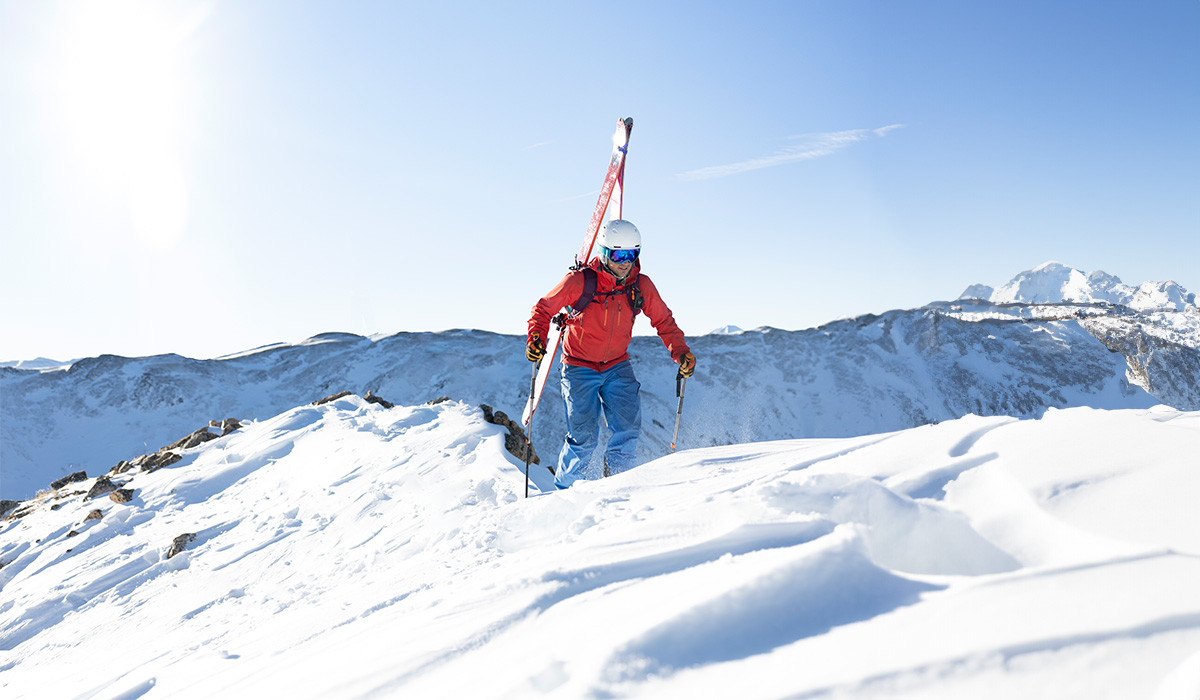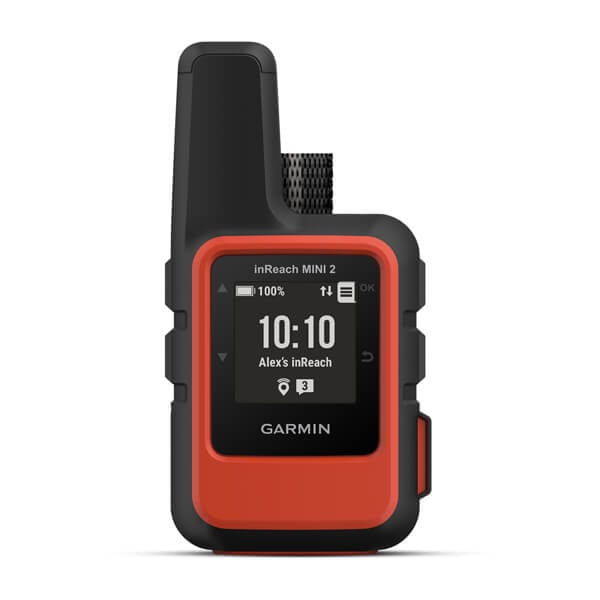
Top Backcountry Skiing Safety Tips From a Professional Guide
Growing up mogul ski racing, former U.S. Ski Team member Mike Hattrup was used to a life within bounds. When a torn ACL ended his professional racing career, however, he went on to star in The Blizzard of Aahhh’s — a film widely known for introducing the concept of extreme skiing to a mainstream audience. That ignited a lifelong journey of big mountain, out-of-bounds skiing.
Though Hattrup closed out the movie expertly navigating the narrow chutes and steep slopes of Chamonix in France, behind the scenes he realized he “had no business being there without a guide,” which inspired him to obtain the proper safety education and certifications to become a ski guide. He’s now been in the business of guiding for 22 years and has led hut trips throughout the U.S. and Europe.
Hattrup carries an inReach® satellite communicator1 every time he guides a trip and shared with Garmin some of his tips for being prepared in the backcountry.
Even though we’ve all heard stories of things going horribly wrong in the backcountry, most of us are optimists when it comes to our own trips — that stuff just happens to other people. However, if we take a step back, we recognize that other people are actually us.
Because many of those incidents are low probability, we write them off and don’t prepare for them. And to be fair, if you prepared for every problem that arose in the backcountry, you’d be carrying so much gear that you wouldn’t be able to move, let alone enjoy skiing. So, what is the right amount of gear to bring? I’ll refrain from dumping the entire contents of my pack on this page. Instead, I’ll offer some insight to help you think about what safety gear you should include on your backcountry trips. In a nutshell, the low-probability problems that I try to prepare for are the ones that are also high consequence, and a solution is not easy to improvise.
When it comes to being in the backcountry, it is necessary to be prepared for and aware of avalanche hazard. It is imperative to get avalanche training and bring the required tools — beacon, shovel and probe — and many are increasing their safety with an airbag. However, two-thirds of all accidents in the backcountry are non-avalanche related, and only a scant few of us have training or even bring equipment or supplies to deal with those situations. Below, I’ll focus on how to prepare for the other 66% of backcountry incidents.
- Repair kit. I tend to include items that will fix problems that would otherwise keep me from getting back to the car and then try to improvise on things that may be a pain in the butt but won’t keep me from moving. For instance, I don’t bring an extra pole basket even though they’re light, because losing a basket is merely an inconvenience; it’s not going to keep me from getting back to the car. I can create a makeshift basket with twigs and duct tape. However, if a binding pulls out of a ski in deep powder conditions, it will be near impossible to go uphill, so I bring plumber’s epoxy, helicoils and extra screws that allow me to remount a binding.
- First aid kit. What you carry in your first aid kit depends partly on your training. As a Wilderness First Responder, what I carry is different than what an EMT or a doctor might bring. Most ski touring medical emergencies are cold-related, orthopedic or open wounds. So even if you have no medical training, you should be able to stop bleeding, splint an injured joint or broken bone, and be able to keep someone warm. Band-Aids, butterfly bandages or Steri-Strips and some gauze should enable you to stop most bleeding, and you can improvise a splint with ski poles, probes, shovels, extra layers and ski straps or accessory cord.
- Staying warm. Between fire starter, a small bivy sack and some knowhow, you should be able to build a shelter and keep someone warm. Because even if you’re prepared, it’s still possible to get benighted. Maybe you lost a ski in deep snow or have a medical emergency and one of your party members can’t move. You don’t have to be comfortable, but you should be able to stay alive and keep all of your digits if you have to spend a night out. You’ll need a way to get out of the wind and insulate yourself from the cold, so learn to dig an emergency shelter. They’re incredibly warm and easy to build, and you can build one using the gear you normally bring on a day tour. And instead of bringing a light pad for insulation, which takes up room and adds weight, choose a multi-tool with a saw so you can cut tree boughs to insulate yourself from the snow.
- Communication. Forms of communication are often overlooked. People rely too much on their cellphones, which can run out of battery, lack coverage or be damaged. I work for two guide services, Sun Valley Guides and Pro Guiding Service, and even though we all carry cellphones (mainly for navigation), we also carry inReach Mini devices. They’re small, light and durable and give you backup navigation and weather forecasts. Plus the batteries last way longer than a phone. Best of all, regardless of cell coverage, you can communicate globally. That message may be to call for assistance in an emergency, but more likely, it’s to keep your loved ones from stressful worrying and calling the National Guard. “Honey, we spent an hour looking for a lost ski. We’re fine but will be home after dark.”
To summarize, you can’t possibly bring enough gear for all backcountry emergencies. Focus on the high-consequence situations, even if they’re low probability. Figure out what you can improvise with from items you normally have on a ski tour, then add the necessary extra items. Last, make sure you have a foolproof communication system.
1Active satellite subscription required. Some jurisdictions regulate or prohibit the use of satellite communication devices. It is the responsibility of the user to know and follow all applicable laws in the jurisdictions where the device is intended to be used.
Notice: Hattrup has received Garmin products.





